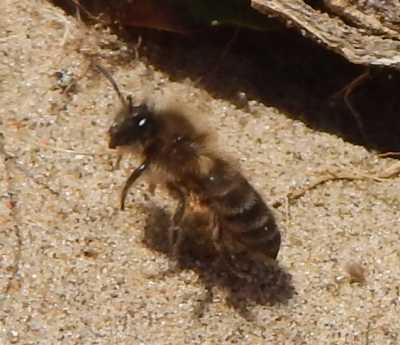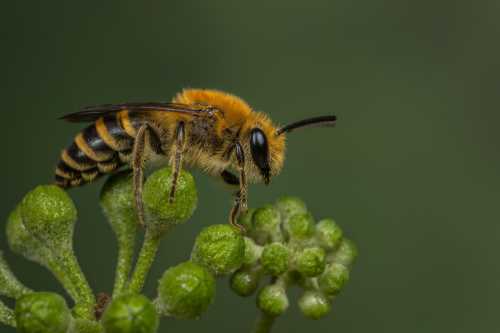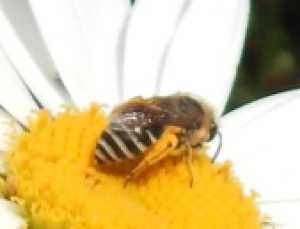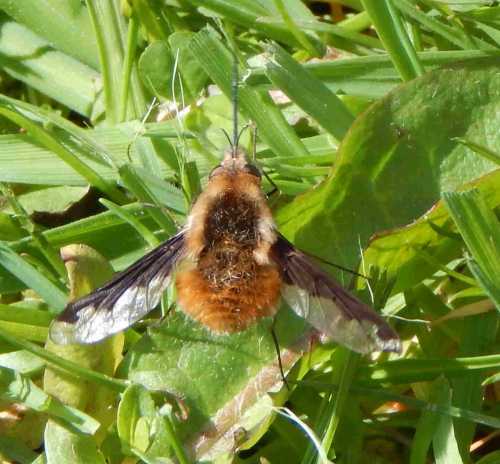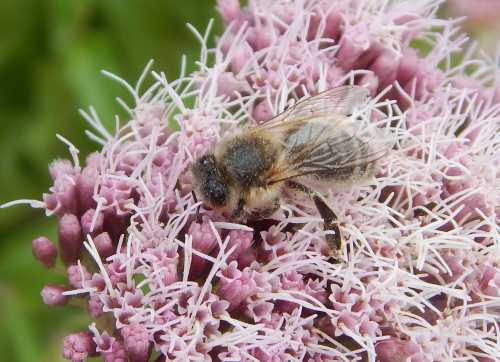Colletes - Plasterer Bees
(Also Known As 'Cellophane Bees')
Colletes means 'one who glues', and it refers to the nest construction habits of this particular species.
About Colletes - Plasterer Bees
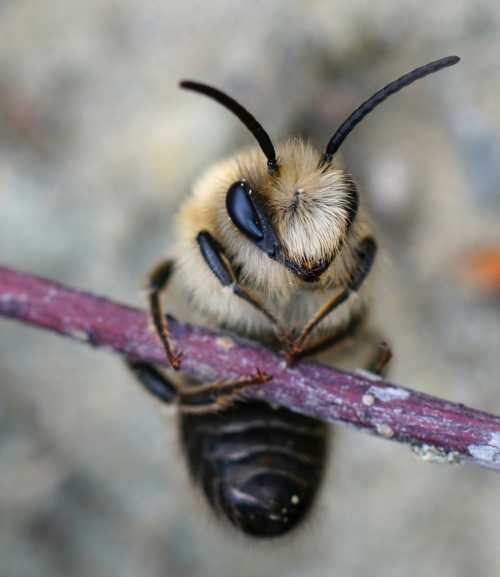 Vernal mining bee - Colletes cunicularius - male
Vernal mining bee - Colletes cunicularius - maleThese bees make a waterproof, fungus-resistant substance - a silky cellophane that they use to glue and line the walls of their nest cells, and which they apply with their short, forked tongues.
They are sometimes called 'cellophane bees' (- or even polyester bees!) This silk material is secreted by the bee from a gland in the abdomen, known as the Dufour's gland.
Colletes species are found in North and South America, Europe and Africa.
They are a medium sized bee, with females ranging from around 6.5 - 11mm depending on the species, and males slightly smaller from about 5.5mm - 10.5mm, again depending on type.
Where do Colletes nest?
Colletes nest in large aggregations (groups), usually in the ground in dry, sandy soils. However, the European species Colletes daviesanus will sometimes make its nest in walls in soft mortar.
Foraging habits
Some species are specialists, collecting food from only one group of plants, such as Fabaceae or Asteraceae, whilst others will visit a range of both wild and garden flowers.
Unlike species such as the honey bee and bumble bee, Colletes do not collect pollen in neat, compact pollen baskets (corbiculae).
Instead, Colletes collect pollen on their hind legs on hairs known as scopa.
Read about Colletes species
If you found this page helpful or interesting, I'd really be grateful if you would share it with others - if not this page, perhaps another, such as Gardening For Bees.
Thank you so much :) .
